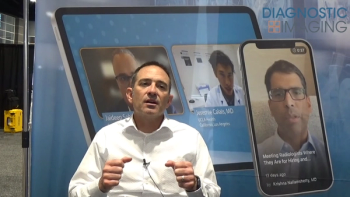
What New Research Reveals About Portable Low-Field MRI and Patients with Suspected Alzheimer’s Disease
In the second part of a recent interview, Tammie Benzinger, M.D., Ph.D., discusses recently presented research from the Alzheimer’s Association International Conference (AAIC) that showed the ability of portable low-field MRI to detect mild and moderate amyloid-related imaging abnormalities (ARIAs).
Can portable low-field magnetic resonance imaging (MRI) have an impact in detecting amyloid-related imaging abnormalities (ARIAs)?
In a study recently presented at the Alzheimer’s Association International Conference (AAIC), researchers assessed the use of portable low-field MRI (Swoop Portable MR Imaging system, Hyperfine) within one week of a corresponding clinical MRI exam for 31 people being treated with lecanemab (Leqembi, Eisai/Biogen) for Alzheimer’s disease.
The researchers found that low-field MRI demonstrated 100 percent sensitivity for mild and moderate ARIAs that were detected in 25.8 percent of the cohort.
“ … To our surprise, we found that actually all of the cases that had edema on the standard MRI, you could see the finding on that low field (MRI),” noted study co-author Tammie Benzinger, M.D., Ph.D., in a recent interview with Diagnostic Imaging. “What surprised me was, honestly, in some of the cases, you could see it better on the low field. I think that just has to do with the fact that low field is … a blurry image. It's not high resolution so an abnormality stands out a little bit more to the radiologist eye.”
Emphasizing that low-field MRI cannot detect microbleeds, Dr. Benzinger said the research shows the modality has potential for facilitating appropriate triage (for standard MRI examination) and safety monitoring.
For future research, Dr. Benzinger noted ongoing studies looking at the ease of use of portable low-field MRI in infusion center settings and the viability of more frequent monitoring with the modality. Another area of study is evaluation of low-field MRI in higher-risk patients, including those with the APOE ε4 allele (ApoE4), prior concussions or brain surgery.
“ … Those are all people that weren't allowed in clinical trials, but we're willing to think about treating them if we had more frequent monitoring.” added Dr. Benzinger, the Hugh Monroe Wilson Professor of Radiology and chief of the MRI service with theMallinckrodt Institute of Radiology and the Washington University School of Medicine.
“How can we achieve that? We think that this low-field (MRI) technology will do that. So again, assessing it for these higher risk patients to see if, with more frequent surveillance, can we extend this care to new groups of patients?”
(Editor’s note: For related content, see “
For more insights from Dr. Benzinger, watch the video below.
Newsletter
Stay at the forefront of radiology with the Diagnostic Imaging newsletter, delivering the latest news, clinical insights, and imaging advancements for today’s radiologists.




























